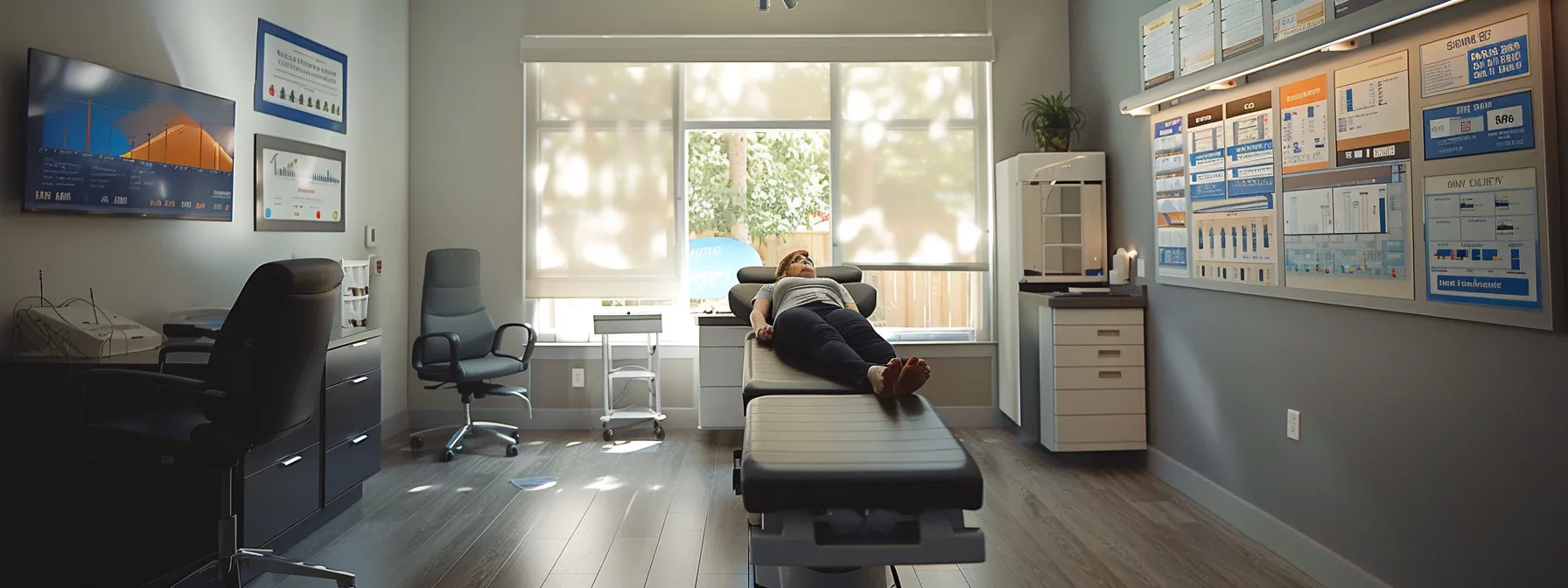Recognizing Scenarios for Chiropractic Care Over Medication

Understanding When Chiropractic Care Is Preferable Over Medication for Pain Relief
Are you tired of relying on medications for pain relief? In this post, I share insights on how chiropractic care can offer an effective alternative to traditional pain management. I explain when chiropractic care is best suited for your needs and discuss its benefits for recovery and well-being. By reading on, you’ll gain clarity on recognizing the signs that indicate chiropractic care is appropriate and learn how to make an informed choice for your health.
Key Takeaways
- chiropractic care targets root causes of pain using precise, hands-on adjustments
- treatment aims to reduce reliance on medications and risky surgical procedures
- personalized techniques address chronic pain and improve mobility naturally
- coordinated efforts with primary care teams ensure safe and informed patient care
- affordable care reduces long-term costs and supports overall wellbeing with regular sessions
Understanding the Role of Chiropractic Care in Pain Management

I define chiropractic care as a patient-focused approach targeting the root cause of pain and stress. My research shows it lessens pressure often felt with disease, offering benefits in pain management without surgery. I assess common pain types and compare safe chiropractic techniques to medication-based approaches, aiming to guide your decisions with clear, practical insights.
Defining Chiropractic Care and Its Benefits
I define chiropractic care as a hands-on approach that targets the body’s root issues, often reducing the need for invasive procedures like orthopedic surgery; my practice aims to improve quality of life by using precise adjustments to address both pain and discomfort.
I apply techniques that prioritize soft tissue work and controlled adjustments, which may reduce the dose of medications required and help clients feel more comfortable, even when wearing a mask during our sessions.
Evaluating Common Types of Pain Treated by Chiropractors
I have treated clients facing back pain, nerve discomfort, and other challenges, and my hands-on approach has proven effective in reducing reliance on medicine. I have witnessed firsthand how precise adjustments aid in managing pain that often leads to issues related to the opioid epidemic in the United States:
I have seen that chiropractic care offers a viable alternative to traditional medicine, particularly when addressing pain without exposure to high doses of medications. I encourage patients in the United States to consider these personalized techniques for a more controlled and balanced approach to pain relief, with a focus on long-term well-being and lower risk of complications related to the opioid epidemic.
Comparing Chiropractic Techniques to Medication-Based Approaches
I see patients who often seek a natural route to relief, steering clear of continuous medication use that may affect organs like the liver. I work closely with primary care physicians and physical therapy teams, ensuring my approach is safe even during pregnancy while addressing the core issues causing discomfort.
My experience confirms that targeted chiropractic techniques provide lasting benefits without the need for constant drug use. I have noticed that a focused, hands-on treatment plan often aligns well with recommendations from primary care physicians, supporting a well-rounded care routine that complements physical therapy and safe pregnancy management strategies.
Chiropractic care cuts through pain with a steady hand. Next, I outline the clear signs that signal when this care fits your needs. For more detailed insights into chiropractic practices and its benefits, visiting the chiropractic care page may provide comprehensive information.
Recognizing the Signs That Indicate Chiropractic Care Is Appropriate

I focus on identifying symptoms relieved by chiropractic care while addressing common red flags that need immediate attention. I discuss issues impacting everyday lifestyle, range of motion, and shoulder mobility while complementing treatment with massage. My insights draw from experience, even in settings like California where practical care and well-being intersect.
Identifying Symptoms Typically Alleviated by Chiropractic Treatment
I have seen that symptoms such as reduced flexibility and discomfort from minor injuries often respond well to targeted spinal manipulation. I frequently observe improvements in movement and overall ease during sessions, which informs my treatment recommendations.
I also notice that persistent issues like constipation and lingering pain after an injury can benefit from careful adjustments aimed at restoring balance and function. My approach relies on clear, hands-on techniques that support recovery and increased wellness.
Acknowledging Red Flags That Require Medical Attention
I have observed that rapid health changes, severe inflammation, and symptoms that persist despite vitamin adjustments indicate the need for medical evaluation:
I have seen that red flags, such as sudden pain spikes and issues that may signal an addiction to pain management medications, warrant prompt medical attention while chiropractic care continues to offer a natural solution for long-term relief.
I have seen the signals and made the call to care. Now, I turn to measuring the relief and results that follow.
Assessing the Effectiveness of Chiropractic Care

I share case studies of successful chiropractic outcomes and patient testimonials that reflect real relief and recovery. I discuss instances where irritation in muscle and knee issues were resolved effectively, often complementing advice from a general practitioner or physician. These insights provide a practical glimpse into alternatives to medication, highlighting genuine results and satisfaction.
Case Studies Highlighting Successful Chiropractic Outcomes
I have witnessed notable successes in my practice where clients reported relief from chronic pain and discomfort, which helped them avoid the pitfalls of prolonged medication use such as nausea; their testimonials, shared via instagram and email, reveal that our targeted approach not only stabilizes the nervous system but also assists in managing common health care concerns. Here is the story reflected in simple steps and individual improvements:
- Improved back structure through precise adjustments
- Reduction of nausea episodes during treatment
- Balanced nervous system response leading to reduced stress
I have seen firsthand that personal treatment plans, backed by clear communication and follow-ups through email, transform the way pain is managed, offering a reliable option for those who seek alternatives to medication and aim to improve overall health care outcomes. Chiropractic care is one such approach that has shown significant benefits in pain management and enhancing overall wellness.
Patient Testimonials on Relief and Recovery
I have collected genuine feedback from patients who have chosen this approach over ibuprofen for recurring headaches, finding significant relief through my thorough exam and careful adjustments that realign the bone structure. Each session incorporates a precise approach to blood flow regulation, which helps alleviate chronic discomfort and promotes overall recovery.
One patient shared how regular sessions replaced their dependence on standard pain relief methods by addressing underlying issues beyond just masking the pain. My hands-on treatments have consistently reduced both bone-related misalignments and persistent headache symptoms, offering them a reliable alternative to conventional medications.
I reviewed the strength of these treatments and found great merit in their careful application. Now, we turn to methods that sidestep drugs and offer a fresh take on pain relief.
Alternatives to Medication for Pain Relief

I focus on non-pharmacological approaches in collaboration with chiropractic care, including exercise and manual therapy to support pain management. I guide patients through lifestyle changes that enhance tissue recovery and support the neck without relying on drugs, providing practical insights that connect these topics in a clear, accessible discussion.
Non-Pharmacological Approaches in Collaboration With Chiropractic Care
I use non-pharmacological techniques alongside chiropractic care to reduce pain and stiffness, working closely with primary care teams to address your overall stress and discomfort. I often share insights on Facebook about simple exercises and manual adjustments that have helped my patients regain mobility without relying on medications.
In my practice, I focus on hands-on therapy paired with at-home stretching routines that work to ease pain and lower stiffness, which in turn reduces stress levels. I collaborate with primary care professionals to ensure a comprehensive treatment plan, and I regularly post practical tips on Facebook that resonate with those seeking sustainable alternatives to medication. stress levels
Lifestyle Changes That Enhance Pain Management
I have found that paying attention to nutrition and physical activity can support joint health while reducing the risk of pain after many types of accidents. I advise combining balanced meals with regular exercise to promote recovery and protect the quality of joint function, especially when insurance provides coverage for preventive care before pain becomes a chronic issue.
In my practice, I have seen patients benefit from adopting daily habits that support their overall wellness. I emphasize that small lifestyle changes, such as improving nutrition and staying active, can make a noticeable difference in managing pain, helping to reduce the need for medication while protecting joints and lowering the risk of further injury. enhancing wellbeing
We move from finding new ways to ease discomfort to looking at the real value of care. Next, I compare the cost and ease of access between our hands-on work and medicine.
Costs and Accessibility of Chiropractic vs Medication

I review the long-term financial benefits of chiropractic treatment and insurance coverage for this care. I consider factors from a recent car accident to everyday pain management, covering issues like stomach discomfort and the cost of care when a car incident occurs. My approach aligns with guidelines from centers for disease control and prevention.
Analyzing Long-Term Financial Benefits of Chiropractic Treatment
I have observed that choosing chiropractic care at our clinic often leads to lower long-term costs when compared to relying on medication. My experience shows that routine visits and personalized adjustments can minimize the need for expensive drugs and avoid complications that require additional treatment, ultimately proving to be a cost-effective strategy over time.
At our clinic, I routinely emphasize how regular chiropractic sessions can reduce the financial burden of chronic pain management. My first-hand insights reveal that patients benefit from fewer emergency visits and lower prescription expenses, making chiropractic care a smart investment in both health and financial savings over the long run.
Understanding Insurance Coverage for Chiropractic Services
I review insurance details with care to ensure that my patients understand how chiropractic services are covered. I work directly with insurance providers to verify benefits, making it easier for patients to access targeted pain relief without facing high out-of-pocket costs.
I explain the specifics of coverage to help patients see how their plans support regular treatment. I have seen that clear communication about insurance options plays a key role in making chiropractic care a practical and budget-friendly alternative to long-term medication use.
We weighed cost and ease of access against the need for relief. Now it’s time to see when care should be the clear choice.
Making an Informed Decision: When to Choose Chiropractic Care

I share guidelines outlining when chiropractic care may be a better choice than medication for pain relief. I also stress the value of consulting healthcare providers for tailored advice. My insights provide practical steps and expert recommendations that help you determine the right choice for managing pain and supporting your overall well-being.
Guidelines for Seeking Chiropractic Care Over Medication
I assess each patient’s needs when troubleshooting pain issues, and I advise exploring chiropractic care when symptoms persist without clear cause. I have noticed that targeted adjustments and hands-on therapies often deliver sustainable relief while reducing reliance on medication.
When you face chronic discomfort or limited mobility, I recommend seeking chiropractic solutions that address underlying problems rather than merely masking pain. My experience shows that a personalized treatment plan can improve overall function and contribute to long-term wellness without the side effects associated with prolonged drug use.
Consulting With Healthcare Providers for Tailored Guidance
I work closely with other healthcare professionals to offer personalized advice that fits your unique situation. This collaboration helps me determine the best course of care and ensures that you receive targeted guidance, which supports your efforts in managing pain naturally.
I share insights from my experience to help you understand how consulting with healthcare providers can refine your treatment plan. My direct collaboration with primary care teams guarantees that every decision about your wellness is informed by practical, patient-focused expertise.
Frequently Asked Questions
What types of pain does chiropractic care relieve?
Chiropractic care relieves back pain, neck discomfort, joint pain, and muscle tension using adjustments and targeted techniques. I help reduce chronic pain and support overall mobility with personalized, holistic treatments in our Atlanta studio.
How does chiropractic care compare with medication?
I practice chiropractic care to offer a natural alternative to medication, using adjustments and massage therapy to address discomfort and support long-term well-being while reducing reliance on pharmaceuticals.
When is a chiropractic adjustment most appropriate?
A chiropractic adjustment works best for managing chronic discomfort, limited mobility, and preventive care. In my Atlanta Inman Park clinic, I tailor each treatment to reduce pain, improve movement, and support overall wellness.
Can chiropractic care reduce medication dependency?
I have seen that targeted chiropractic adjustments can support pain relief, potentially reducing the need for some medications by addressing root causes and improving overall function. This approach pairs well with a comprehensive wellness strategy.
Is chiropractic treatment accessible in Atlanta?
Yes, Any Spine Chiropractic & Massage Studio in Atlanta offers accessible chiropractic care, located near the Beltline in Inman Park. Our team provides customized treatments for pain relief, injury prevention, and overall mobility improvement in a welcoming, inclusive setting.
Conclusion
I believe understanding when to choose chiropractic care over medication plays a vital role in managing pain effectively. I see targeted adjustments and personalized treatments as powerful tools that address the root issues and foster long-term well-being. I emphasize the importance of consulting healthcare professionals to tailor a balanced approach that reduces reliance on drugs. I stress that informed decisions today can lead to improved quality of life and lighter financial burdens tomorrow.





